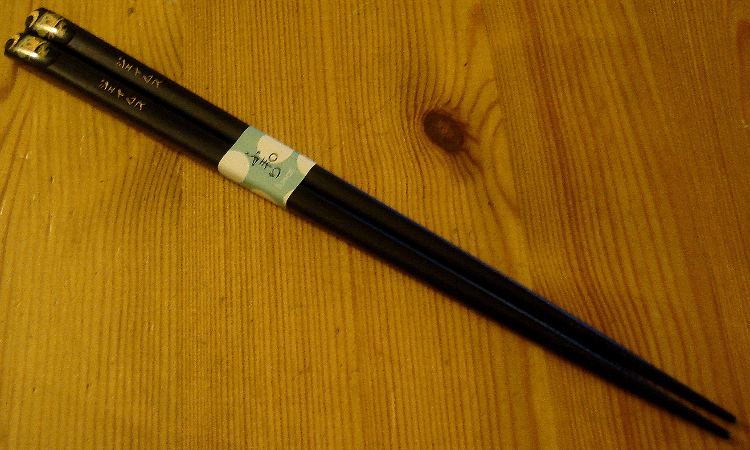Yesterday I mentioned that, of the two most common ways to say the number 4 in Japanese, “yon” is typically preferred over “shi” because the latter can mean “death”.
The Japanese are superstitious about death in this sense, and there are several pieces of chopstick etiquette related to death/funerals.
箸
“hashi”
chopsticks
Many of the things you mustn’t do with your chopsticks are described by a word preceding 箸. In these cases the word “hashi” changes to being pronounced “bashi”. I am not sure why 🤔
Let’s look at two of the etiquette rules related to death:
1
突き立て箸
“tsukitate bashi”
upright sticking chopsticks
This means that you must not put your chopsticks into your rice (or other food) so they are held upright like so:

This is only done at a funeral or burial service (as indeed the above picture is from).
Here is the prefix word:
突き立てる
“tsukitateru”
to stab, to thrust (into), to plant (in the ground), to stick upright
There are two other ways I saw of writing the rule:
立て箸
“tate bashi”
standing chopsticks
仏箸
“hotoke bashi”
dead person chopsticks
2
There is a practice at some Buddhist funeral ceremonies of gathering/passing the cremated remains of the deceased using chopsticks.
骨拾い (こつひろい)
“kotsu hiroi”
gathering up the ashes of the deceased
Understandably, this leads to another forbidden practice when using chopsticks at the dinner table: do not pass food one person to another, chopsticks to chopsticks.
The name for this takes its prefix from the above term. Below I give a translation of the rule rather than the literal meaning.
拾い箸
hiroi bashi
passing food with chopsticks
An alternative term for this that I have seen is:
移し箸
“utsushi bashi”
transferring (with) chopsticks
Perhaps that one is a little easier to remember.
(BONUS)
Another rule is not to lay chopsticks in a cross. They should always be placed neatly next to each other, on a chopstick rest if available.
箸台 (はしだい)
“hashidai”
chopstick rest
I read conflicting reasons for this. In some places it said that the cross is a symbol of death, but in others it said that the cross is a symbol of rejection (of the food) and therefore very rude to the host.
I also could not find a neat self-contained term for this rule like the ones I shared above of the prefix+箸 format.
Does anyone know what the phrase for the “don’t cross your chopsticks” rule would be? 🤔
Today’s header is a set of chopsticks I was given when I left Japan. What do you think they have written on them?


Very, very interesting. One is curious to know what the passing of these cremated body pieces ‘symbolises’, i.e. what the enacters feel it is doing for them. Is deep respect being shown to the dead person by ‘sharing’ him/her like food (the ‘food of life’), or is one ‘ingesting’ the power and spirit of the dead? Dare one ask what the ‘cremated remains of the deceased’ are, that they can be ‘passed round’? What does the last person who receives them all do with them? Or are they passed in a circle and then put back? Once when I was about eleven I put my knife and fork in a cross at my table-place and my parents went ballistic. It wasn’t clear what the taboo was that I’d broken, but it was clearly very deeply held. I suspect it was a combination: 1) unlucky to ‘play’ with Crucifix imagery, 2) signified someone at the table was going to die. I jolly well never did it again!
LikeLiked by 1 person
Good comment! Thank you!
Regarding what is “passed around”, I think that it is bones. I will look further into these ceremonies and write a future entry on it.
LikeLike